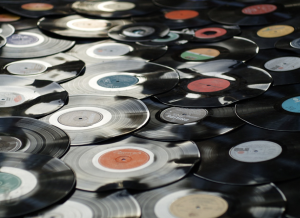The Study Survival Guide: Meeting High School’s Higher Expectations
June 23, 2022
High school undoubtedly comes with an increase in workload. It may feel like life has been turned into a perpetual game of catch-up, but it doesn’t have to be this way. After reading How To Become A Straight-A Student by Cal Newport, I realized that, as students, we don’t need to choose between academics, sleep, and a social life. We do have enough time in our day to accomplish what we need to get done, but the problem is that we have been taught to prioritize the length of time we study over the quality of our concentration when we study, a.k.a. pseudo-working: a lack of focus and concentration while spending a long time working, resulting in not a lot of progress. The formula of work accomplished = time spent x intensity is crucial for understanding how to spend a minimal amount of time getting a lot of work done. Newport gives the example of being able to study 10 hours for a test with an intensity score of three, or to study in three one-hour bursts with an intensity score of 10, and I’m sure we all want the latter. However, if we want to have productive work sessions, we also need to plan times to take a break, and that requires time-management skills. This article provides a condensed version of the strategies and systems for studying efficiently that are offered in Newport’s book. If you find them helpful, you can read more about how straight-A students approach essays and exams too.
Manage Your Time
We’ve all heard about the importance of managing our time to get stuff done. But seriously, the purpose of managing your time is to reduce stress, so this time-management system was created to be flexible, easy, and quick.
- You need a calendar that you can easily reference every morning, whether you’re using notability or Google Calendar. This will be continually updated to record all your tests, deadlines, and events. You can also add reminders for yourself by writing on the day you expect yourself to have accomplished a subtask (or stepping stone) of a long-term project you’re working on.
- Next, find a place where you can write your daily to-do lists, like on Notability or the Reminders app. Each morning, write down the tasks you want to accomplish in a day. Then, rearrange them in order of what is the most important and urgent, so that you are giving your time and energy accordingly.
- Label each task with the specific time you plan on doing it; make sure to account for breaks, meals, and commute time. Whatever tasks you can’t schedule into your day, move it onto a future date in your calendar.
- Throughout the day, you can move around your tasks when something unexpected arises.
- Repeat this process of taking 5 minutes each morning to look at your calendar and plan out your day. Remember to prioritize the tasks that are non-negotiable. Through trial and error, you will develop a better sense of how much you can realistically complete in a day, what days are less busier than others, and what assignments take longer than you might have thought.
Everyone Wants To Procrastinate
Everyone gets the urge to avoid work; no one has found the answer to always being motivated. Luckily, the following techniques have been tested to help you bypass the urge to procrastinate and get the work done.
Have a work progress journal.
When you are checking off everything you’ve accomplished for the day, write an explanation for the tasks that weren’t completed. It forces you to confront how weak your excuses are; whether it’s social media, or pushing it off to “tomorrow,” procrastinating becomes less fun. While it may not be necessary to record this every day, during extremely busy periods like April and May, it can give you that boost of motivation to stop avoiding your work.
Maximize nutrition.
Your brain, just like your body, requires energy to perform its best. Here are some nutritional rules for maximum energy:
- Drink your water. Either get a water bottle, or use the mini paper cups by our water fountains. Stay hydrated.
- Watch your caffeine intake. We turn to caffeine as a source of energy, but too much of it only makes us jittery. Try drinking tea or water before getting another coffee.
- Look at food as energy. Carefully choose a study snack that promises long-term sustained energy. We know that chips and candy make us tired and lethargic, so go for an apple, cashews, whole grain crackers, or granola bars.
- Don’t skip meals. When we have low blood sugar levels, it becomes impossible to concentrate, so give yourself 30 minutes to refuel, recharge, and get ready to tackle the next task.
Build a routine.
As high school students, our schedule can look different everyday, but try to identify at least one hour that is consistently free during weekdays. Use this time to do the same task each week (like working on a research paper, studying for an AP exam). When this hour becomes a habit of working on something, you will find that you don’t even need to convince yourself to start.
Taking ownership of your schedule.
When there are two finals or seven tests in a coming week, long work days are just inevitable. However, if you can plan them in advance, you can also plan to do relaxing activities before and after these days. Treat the long work day as a challenge, one that we prepare for, and one we can feel accomplished and rewarded for when it’s over.
The Little Things Count
Details like where you should go or when you should work are more important with regards to studying, so read on to discover three crucial tips to maximizing efficiency for study sessions.
When is the best time to study?
We are the most energized and focused between the time that we are getting out of bed and sitting down for dinner. Many students believe that a long stretch of uninterrupted hours at night seem ideal for working, but it’s not. Your body is starting to wind down for sleep. By the time you begin to work after dinner, you only have a few hours left before your brain has no energy and your ability to focus is hijacked by your desire to sleep. Even when we do stay up late, we start the next day with a battery half-charged, forcing us to study harder, instead of smarter.
To get the most out of your time between breakfast and dinner, bring study materials to school. When you have a free period, use it to do work. If you need to read a book, leave the hardcopy at home, and get a PDF on your iPad so you can fill a block of free time with reading. Also, find a place in school (whether it’s the library, an empty class that a teacher works in) to become your study spot; it prepares you mentally to be productive when you hit the same study spot every time.
The idea is not to be studying 24/7, but if we’re being honest, not much happens between classes either. Our most memorable experiences with friends often happen after sports and clubs and studying has finished, so the point of working during the day is to have fun when you’re done! By creating a realistic to-do list that optimizes our free time during the day, we gain valuable hours to spend time with others and ourselves. Whether it’s facetiming a friend, playing a video game, or watching a movie, we can work hard and play hard.
Where should you study?
In a clean, isolated place. By protecting yourself from distractions, you’re less likely to feed yourself with alternative things to do, thus finishing your work quicker. If you want a study partner that won’t distract you, try searching for “study with me” videos on YouTube.
How long should you study?
Newport found that nearly every straight-A student studied somewhere between thirty minutes to an hour, and then took a break. While this timing doesn’t have substantial scientific backing to it, it seems to give us a break just when we aren’t retaining information anymore. It’s crucial to spend your five to ten minute break doing something unrelated to your work. Fill your water bottle, eat a snack, take some deep breaths outside, you will return to find a new angle to approach that math problem you’ve been working on.
Not every piece of advice in this article may fit your needs, and that’s okay. We’re all unique, and likewise, how we study. Use these suggestions as a jumping off point, and be flexible as you search for habits that will help you optimize your time. In reading this article, I assume that you have already decided to reject the idea of sacrificing sleep and a social life for good grades. The next step is to learn from others about how to streamline your study skills. But most importantly, you must implement and experiment to find what works best for you.








